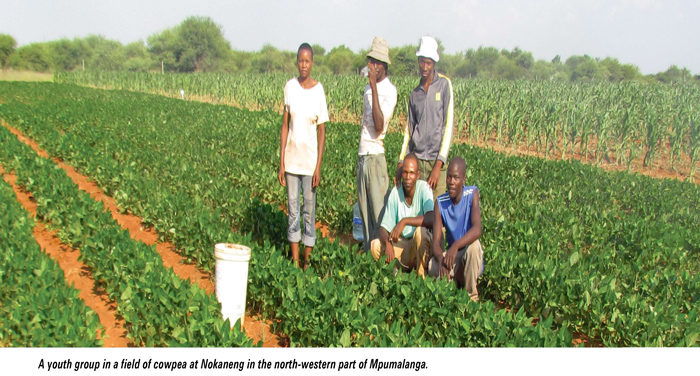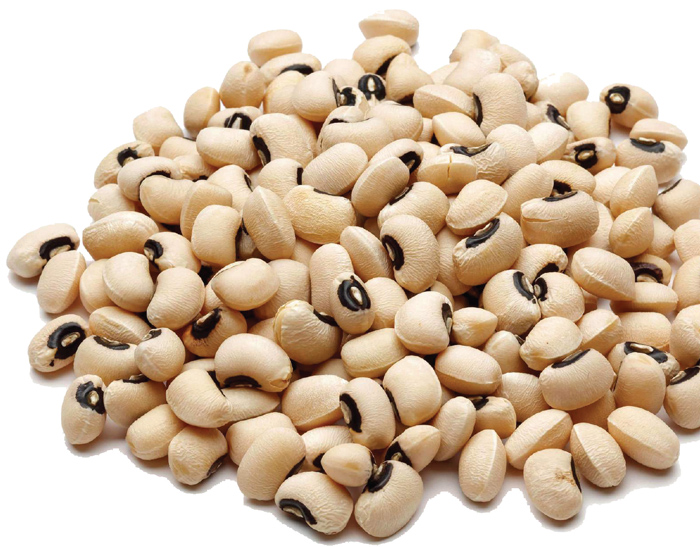February 2020
| Jenny Mathews, Pula Imvula contributor. Send an email to jennymathews@grainsa.co.za |  |
Maize is a dominant and popular crop of choice in summer production regions of South Africa. Farmers are familiar with the growing habits of the plant and are confident they will be able to produce food for their households and feed for their animals.
Over time farmers have also developed marketing routines that they are comfortable with. When you are a family food farmer and maize is a staple food which you know how to grow, then obviously it is a first-choice crop. Maize has been fairly forgiving in a mono-cropping farming system as the plants will always yield a measure of corn but research has shown that this crop of choice performs even better when it is grown in a planned three or four crop rotation system with leguminous crops like cowpeas.
Yields have been shown to decline steadily in mono-cropping systems as soils steadily become depleted because the plant needs the same nutrients each season; certain weeds become problematic as they stubbornly increase in the mono-cropped field; and specific diseases and pests thrive and increase in a field that presents them with their ideal habitat year after year.
In the January 2020 Pula Imvula, the benefits of growing crops in a carefully planned crop rotation system regardless of whether the farm is a huge commercial operation or a small household food garden, were highlighted. Many farmers in Grain SA’s farmer development programme is first producing food for their families and then intending to market the excess. This article will be the first in a series that will take a closer look at beneficial leguminous plants which could be grown in crop rotation with maize. These crops will not only benefit the soil, crop health and yields returned, but will further add value by improving the nutritional security of a household.
One of the major challenges to balancing our diet is finding a good source of protein. It is the most expensive aspect of our diets. Protein is found in meat, poultry and fish, eggs, dairy products such as milk, yoghurt and cheese and in beans and legumes such as chickpeas, lentils and groundnuts.
As a farmer, you are truly fortunate to be able to grow your own beans like sugar beans, kidney beans, small white beans and also soybeans and groundnuts. These are all excellent sources of protein that can be marketed or stored for household consumption. Small changes in a family’s diet can make a huge impact on general health, well-being and productivity whether the family member is a growing child who needs energy, a learner who needs brain power and focus or already working productively and needs stamina and creative thinking – and we all need to feel well to perform our best. As a farmer you have the power to make the difference to your farmland and your family at the same time – by growing the right crops for healthy soils and sustainable farming, and for growing a healthy family.
COWPEAS
Cowpea is a versatile crop which can be used in a multitude of ways. It is a summer growing, annual legume scientifically known as vigna unguiculata commonly known in South Africa as Akkerboon, Swartbekboon, Black-eye pea or local names are Dinawa, Dinaba, Tinyawa, Munawa, Imbumba and Ishlumaya. Technically speaking the cowpea is a bean not a pea crop. The cowpea is indigenous to Africa and is one of the oldest food sources known. It performs well in the warm season and can be utilised both for human consumption and animal fodder. Furthermore, the whole plant can be used since seeds, pods and leaves are edible.

GROWING COWPEAS
The cowpea is normally cultivated under dryland conditions and is known to be more drought resistant than the common bean which makes it an important crop in developing countries. Farmers must use good quality seed which is cleaned and free of insect damage. Planting time is from mid-November until late January, but this is influenced by what the crop is used for i.e. green feed, leaves, forage, green beans or dried peas for household consumption.
The root system of the cowpea is deep rooted with a strong taproot. It also has many lateral roots which spread in surface soil. Root depths of up to 2,4 m have been measured as soon as eight weeks after planting. This means the plant has the ability to access nutrients far deeper than a maize plant can. Cowpeas have low fertiliser requirements and are known to grow well utilising the residual fertiliser in the soils from the previous crop. They are also known to fix nitrogen efficiently and a cowpea crop will add between 40 kg to 70 kg per hectare, per year to the soil. This makes it a valuable plant which enriches the soil for the follow-on crop. Cowpeas are vulnerable to competition from weeds which will compete for space, sunlight moisture and nutrient in the soils.
COWPEAS ARE A ‘SMART FOOD’
Smart food crops are so named because they are:
ANIMAL FEED
The crop can be fed to animals in different forms at all stages of development. It is a great pasture when still green and livestock thrive on the stems and leaves post-harvest. Many smallholder farmers store the dry feed for their livestock in winter months when there is little other food. Cowpea hay can be stored in bags or in haystacks. Even the seeds can be mixed into animal rations to increase the protein levels.
SOIL HEALTH
It is a legume, so it has nitrogen fixing abilities. This means it draws nitrogen from the atmosphere which is stored in the nodules on the plant’s roots and then fixed into the soil. This is beneficial to the cowpea crop and will still benefit the next crop planted there. Farmers have reported significantly increased maize yields following on cowpeas because of the increased levels of nitrogen.
COWPEAS CONTRIBUTE TO HOUSEHOLD NUTRITION STATUS
The cowpea, or ‘black-eyed pea’, is a healthy addition to any household diet. It can be used in many forms and is a wonderful source of protein, fibre, vitamins, minerals and energy. It provides the amino acids required to grow or repair protein-based tissues such as brain, nerves and muscles.
Do you have a favourite recipe for using cowpeas in your cooking? We’d love to see if you are willing to share it. Please email me at jennymathews@grainsa.co.za
Publication: February 2020
Section: Pula/Imvula